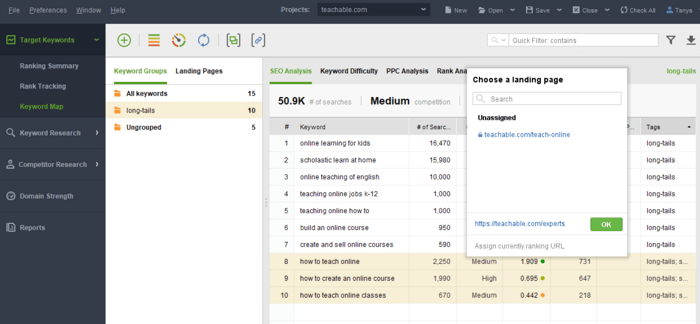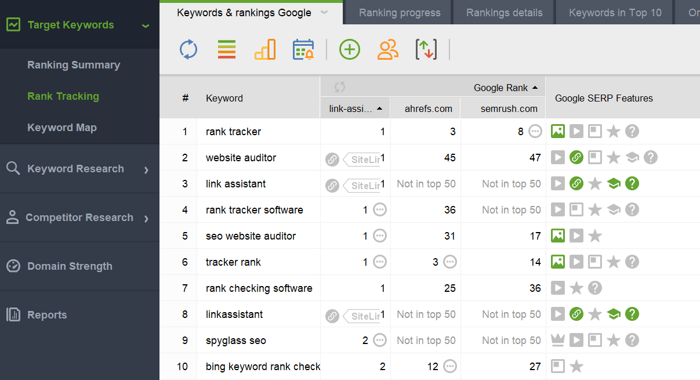
14 Advanced SEO Techniques & Tips to Boost Search Traffic

Every newcomer to SEO knows the chilling touch when you first peep into the Search Console and see all those graphs and warnings. But usually you grow from a total noob easier than you think.
Aren't you tempted to spice up your routine with a bit of advanced SEO stuff? With this thought in mind, we've made a compilation of advanced SEO techniques that will increase your chances to rank higher, faster, and with even more energy.
Contents
- 1. Audit site for indexation and crawlability issues
- 2. Integrate tools for in-depth SEO reporting
- 3. Create SEO optimized landing pages
- 4. Track SEO value of your landing pages
- 5. Improve your site SEO health in line with Core Web Vitals
- 6. Optimize for mobile page speed
- 7. Leverage data from the Chrome UX report
- 8. Occupy more of SERP space
- 9. Treat videos as the new content king
- 10. Update your Google My Business listing
- 11. Build your brand's reputation
- 12. Be present on Amazon
- 13. Update old posts
- 14. Go for creative link building
1. Audit site for indexation and crawlability issues.
Google Search Console is one of the most essential tools of any business owner SEO tools' kit, as it measures site's search traffic and performance. You must have noticed that the tool is undergoing changes all the time, with some interesting features dropped down to the Legacy Tools, while other new features appear in place.
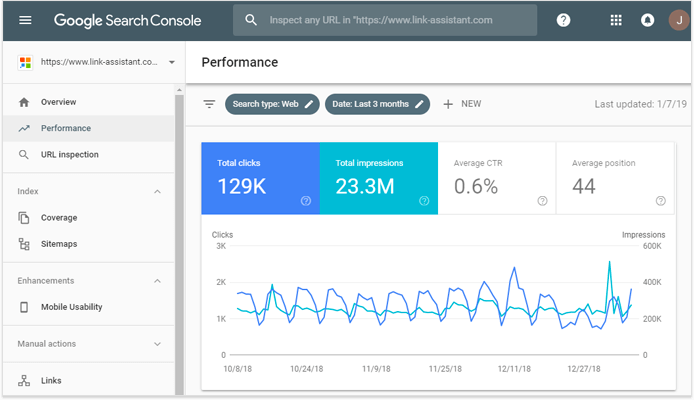
Have you checked them? If not, I would suggest test-driving the following add-ons to make your SEO process even more efficient.
1. Analyze the Performance report.
Currently, we can look at data from one day to 16 months maximum, or set a custom time range (though it may take time to extract long-term stats). The Performance report gives you a quick overview of your impressions and clicks. By clicking on Search Results, you will find your top queries and top performing page data.
2. Look at the Index Coverage report.
It divides all the URLs of your site into 4 categories: Errors, Valid, Valid with warnings, and Excluded. The tool shows reasons why a particular status has been attached to the URL and gives advice on how to fix those problems.
3. Test your links with URL Inspection tool.
Paste in a link and see all the problems Google currently sees for it. When you are sure the issues have been solved, validate those fixes right in the tool and ask for a recrawl.
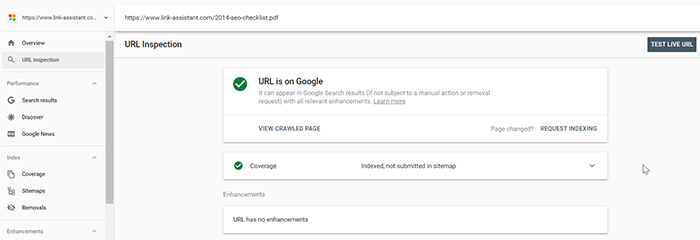
4. Check how your pages and resources are indexed.
For some specific advanced SEO techniques, you need to have a solid understanding how SEO works. Very often, webmasters focus only on one major search engine like Google, forgetting there are many more others that may bring you around a fifth of your search traffic. As far as your crawl budgets go, you’ve got to make your website optimized for various search engine bots, and ensure that all your important resources are crawlable.
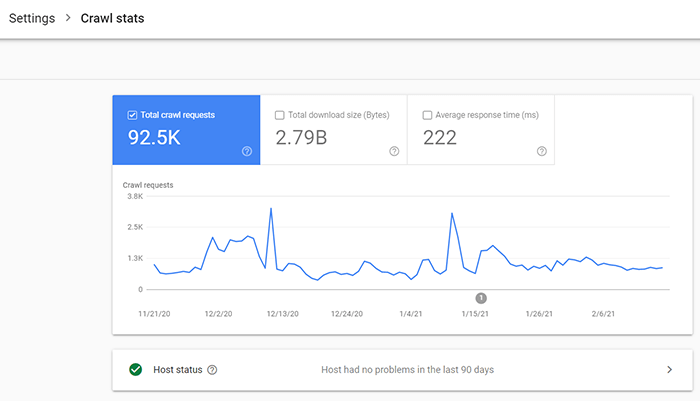
First, you can have a look in Search Console > Settings > Crawl Stats when and how Googlebot sends requests to your pages. The report provides a breakdown by response type, file type and Googlebot type.

How-to
You can run a custom crawlability check with WebSite Auditor SEO spider. The website audit tool includes advanced settings that allow crawling your site as a certain search bot or as a specific user agent. For example, try a separate check for a mobile bot to see if there are specific crawling errors that occur on mobile devices.
1. Start the tool and paste the URL of the site to crawl.
2. In the project, go to Project Preferences > Crawler Settings.
3. Tick Execute JavaScript, identify resources you want to get crawled, choose the crawl Speed, if necessary, and define other relevant fields to run in-depth technical site audits.
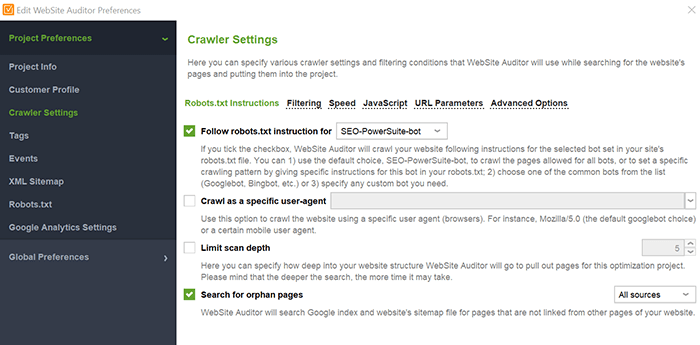
This ensures detecting specific issues across different search engines, on mobile devices or in specific browsers.
Optimization tips:
1. Optimize your URLs
Optimized URLs should not be too long. It is recommended that URLs contain keywords in them.
2. Submit a sitemap to help Google understand your site structure.
Compile a list of all URLs in an XML sitemap (you can make it easily in Website Auditor > Webmaster Tools) and submit to Google. This will help search engine bots discover pages and crawl them quicker.
2. Integrate tools for in-depth SEO reporting.
Link your Google Search Console account to Google Analytics, and you’ll be able to see some chunks of the data combined. For example, in your Analytics, you will get queries stats from the Console: keywords, their impressions and clicks, click-through-rate, sessions and pageviews, and the bounce rate. Having these stats, you will be able to pick your top keywords to optimize for.
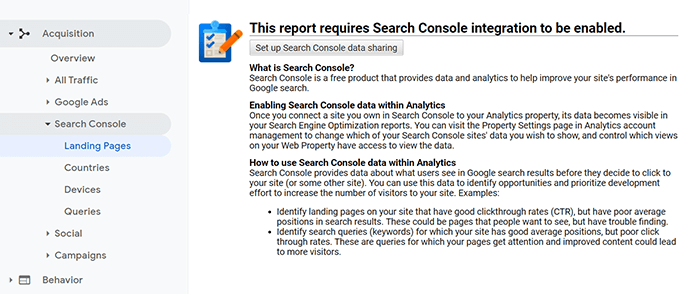
SEO tip:
When your web team is pretty large, create an IP filter to prevent internal traffic from affecting your reports.
Google Analytics 4 includes the Analysis Hub where you can create custom reports for advanced SEO analysis. For a beginner, it may look a bit overwhelming. While GA4 is still in beta, you can add the property and start exploring it.
Share your reports with the team.
This function allows you to share the reports with those people who don't have access to the accounts. This way, you can pass your valuable data to developers or clients without any barriers.
The simplest way is to hit Export or Share in the top right corner available in your Search Console and Analytics account. You will have your reports in CSV, Excel, or PDF format.
If you want compelling reports with visuals, have a look at our guide on Data Studio integration. You can connect to over a dozen Google products, including Google Sheets, Google Ads, BigQuery, with the help of connectors. Among the advanced SEO techniques, this is the best one, we have these reports at hand practically daily.
3. Create SEO-optimized landing pages.
In the Search Console, a landing page is any page through which visitors enter the site. SEO optimization of landing pages presupposes that you explore the intent of your visitors, and create a specific page to target for certain keywords matching this intent. The higher your landing page on the SERP, the more visitors it will bring to your site, which proves the validity of your SEO tactics.

So, the next point in our list of advanced SEO techniques: tracking SEO rankings of your landing pages with the help of Rank Tracker.
How-to
1. When you’ve researched your top target keywords, move them to the Keyword Mapping module.
2. In the Keyword Mapping module, pick the keyword (or several keywords), left-click on it and select Assign keyword(s) to a Landing Page.
3. Enter the URL for your landing page and click OK.
Next time you check rankings, you will see all the ranking stats about the keyword and how it performs for this landing page: the search volume, traffic and clicks, estimated costs for pay-per-click, visibility, keyword difficulty, SERP features if any of them are present.
An advanced SEO tip: a pro version of the Rank Tracker allows creating automatic reports that will be delivered to an email or shared in the cloud, you pick the settings. It will make your SEO reporting tons easier and quicker. Set to receive notifications when your site visibility improves or when a page enters (or leaves) the top 10 results on the SERP. This way you will measure your SEO progress regularly.
4. Track SEO value of your landing pages.
In terms of marketing, a landing page is a type of page where users are supposed to perform valuable actions, for example, make a purchase, fill in a subscription form, or share something.
To track the effectiveness of your landing pages, you’ve got to set up Goals (available from the Admin panel in your Analytics account), assigning the valuable action to the URL of your landing page.
When you want to analyze the marketing efficiency of some landing page, go to Conversions > Goals, scroll down to Goal completion, and see the breakdown by top performing page and by source. The latter shows the percentage of your search traffic performing the valuable action intended for the landing page.
Optimization tips:
1. Main call-to-action buttons should be clearly visible.
Fill-in forms on your landing page should take only a few clicks. The Contact Us button should be easily available.
2. Improve on-page SEO.
Optimize content with SEO keywords properly, fill in meta titles and descriptions. Go for long-tail keyword research to target the audience that converts better.
3. Use link-building tactics to improve PageRank of the landing page.
Build more links from lower-level pages to the main landing page; enhance page authority by earning more backlinks from other domains.
5. Improve your site SEO health in line with Core Web Vitals.
The three user experience metrics, namely loading speed, interactivity, and visual stability, jointly known as the Core Web Vitals are underway to join in the bunch of SEO ranking factors.
The full rollout is to be complete in May 2021, yet we’ve seen the impact of this update in iterations tested in advance. It’ll have a serious impact on how pages are ranked based on user experience and technical performance of a website.
What are Web Core Vitals: A Guide to Google’s New Ranking Factors
Forewarned is forearmed. Run a website audit to find out if you’re ready for the update.
How-to
1. In your Google Search Console, check out Enhancements with Core Web Vitals report based on the Chrome UX report data.
You will have the breakdown by the device type, with mobile devices going first (as Google has switched to mobile-first indexing). You will not see any technical mistakes here. The tool shows the performance of your site overall: the number of good URLs, poor URLs, and URLs that need improvement against the Core Web Vitals metrics.

2. If you are looking into specific pages and their performance, check the respective dashboard in the Page Speed Insights tool.
The tool evaluates the aggregate experience for loading the page over a 28-days span and gives a score, showing if the page passes the acceptable loading and usability assessment. The higher your optimization level is, the higher speed score you get.

6. Optimize for mobile page speed.
Mobile page speed as an SEO ranking factor became an SEO benchmark of 2018. However, the most interesting thing was how this ranking factor actually influenced search optimization.
Have a look at the experiment we ran at SEO PowerSuite before and after the Page Speed Update rolled out in 2018. We aimed at seeing how mobile page speed influenced real rankings. No surprises there, the optimization level proved to be a decisive factor for a page's position in SERPs.
Optimization tips:
1. Run the Google mobile testing tool for a page audit.
The Google Mobile-Friendly Test is currently accessible right in the search box on the result page. Paste your URL into the toolbar, and you switch over to the Search Console where the tool is located.
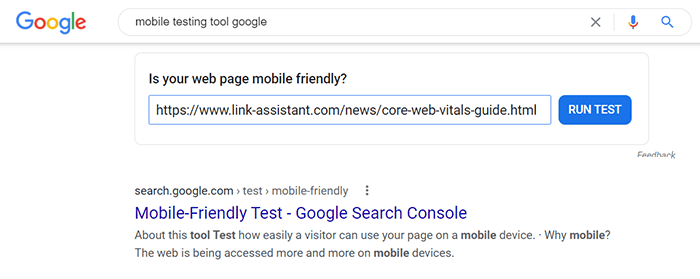
This is a basic test to verify whether your responsive web design is working, and how many loading issues the page contains. The testing tool gives an estimation whether the page is mobile-friendly or not. You can take a deeper look by clicking onto the Page loading issues warning sign.
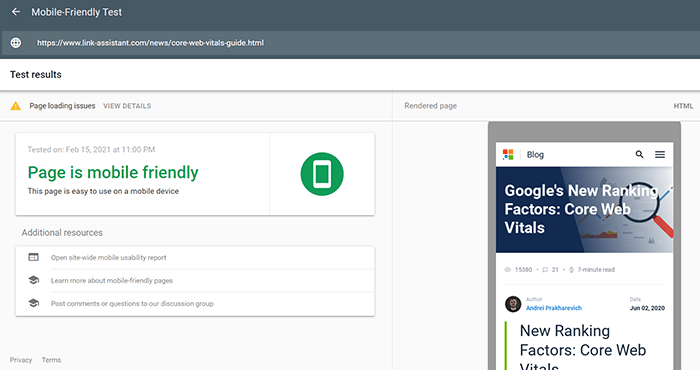
2. Check how Google sees your site in the Page Speed Insights tool.
Check your site in PageSpeed Insights in terms of speed (as the combination of field and lab data. Starting November 2018, field data, aka real-world measurements, migrated to a separate section in PageSpeed Insights. The lab data, powered from the Lighthouse simulating page loading on mobile devices. Analyze Google's recommendations in the Opportunities section:

The list of such opportunities can be rather huge. Use this guide to learn how to optimize for each and every opportunity from PageSpeed Insights.
3. Run regular technical audits and fix any issues spotted.
How-to
1. Create a project in WebSite Auditor.
2. Go to Site Structure > Site Audit and review the results. Once you see Error or Warning signs, pay closer attention to those sections. Use in-app SEO tips for fixes. Clean up your site from duplicate meta tags and page title tags, empty tags, fix long redirect chains, mixed content issues, create and submit an XML sitemap.
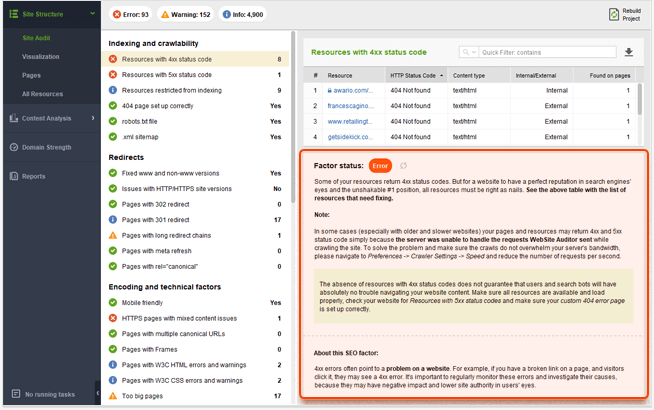
SEO tip: Optimize large files that slow down your page speed
Go to Site Audit > All Resources and filter your Internal resources by Size and Server Response. Once you find large images and images, optimize them using compression or web-friendly format. Find a few techniques from our brief guide to image optimization.
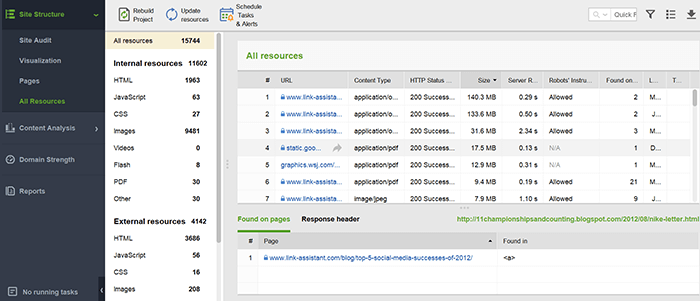
Keep in mind that images and videos play a big part in your brand appearance on Google. Good-quality images boost rankings on Bing or in Google image carousels. Besides, images are crucial for appearing on Google Discover. For some search appearance features, you will need to implement structured data. Listen to this short guide from John Mueller with tips for image optimization.
7. Leverage data from the Chrome UX report.
Chrome UX Report is a source for Core Web Vitals insights based on BigQuery and Data Studio visualizations. The user won’t need to write a single line of SQL to extract the data. For a start, complete the permission prompts to link the raw CrUX data to Data Studio (here is a brief explanation on connectors and how to make it work).
The tool allows entering origins, not full URLs. Make sure to input the right protocol and subdomains, if relevant. If the origin exists, you'll be taken to the schema page for the dashboard. Here you will see all important fields and factors.
There is nothing to change here for you. Hit Create Report, and the metrics over the real user experience will be presented in a single dashboard. Each metric is explained on the left, and the percentage of pages with this or that performance result appears to the right.
The first page in the CrUX report is an overview of your site performance over the past month. These are the most important UX metrics that Google recommends you focus on.
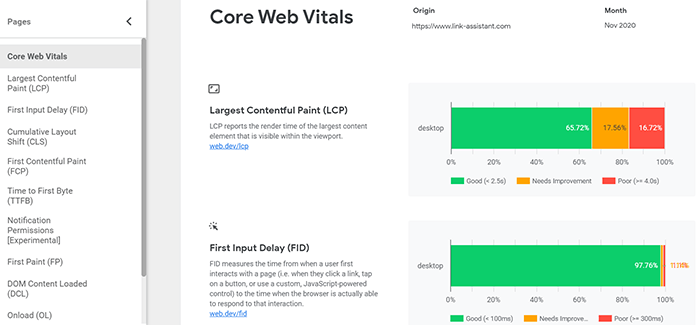
The report is customizable with a wide array of layout, theme, and value filters. You can change the date settings with the help of Month filter. Add or remove fields to see a breakdown for desktop and mobile.
8. Occupy more of SERP space.
I first thought it was funny — to search for something on Google and see something different every single time.
For example, to see how the Hotel Pack has recently changed quite a lot and acquired a different filtering system and 4 results instead of 3:
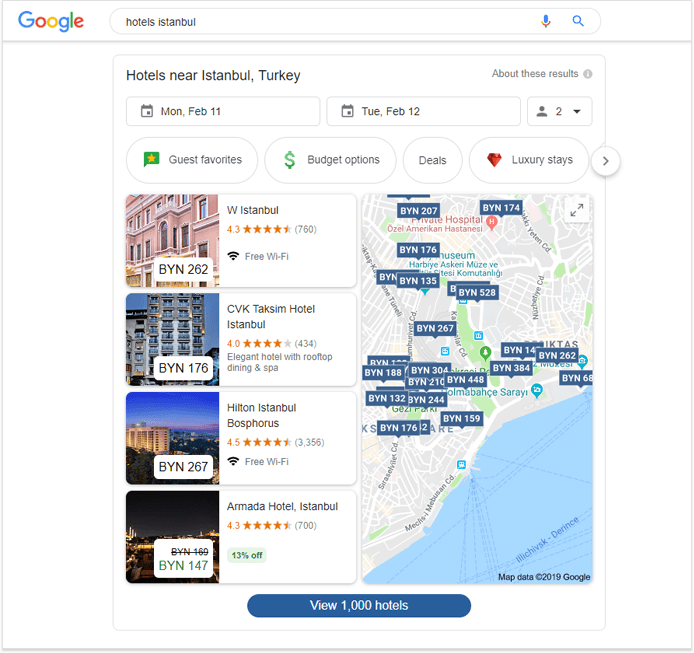
But as the organic results keep shrinking at the speed of light, I could not but think: we need to learn how to go beyond organic. How about mastering a few of these advanced techniques:
1. Get a featured snippet.
Featured snippets are not exactly a new thing, but their position above all search results makes them a hot topic of any SEO discussion.
If Google renders a piece of your content in rich results like a featured snippet, you will find this information as a page with a reference to the anchor text that is highlighted in the browser.
To check this for an individual page, in the Search Console go to Search Results > Pages, select an exact Page and enable the filter URLs containing.
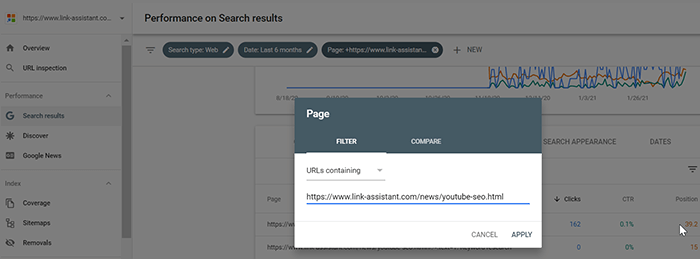
You will see what keywords are ranking in a featured snippet.
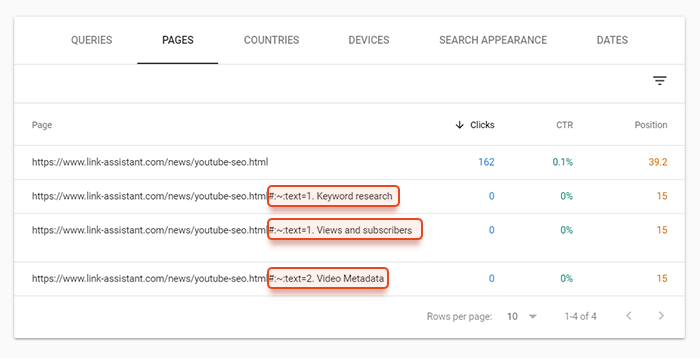
Alternatively, you can use Rank Tracker to check where rich SERP features are available for your choice of keywords, and which of them are occupied by your landing pages.
Whenever you find that a rich feature is available for your set of keywords, use a couple of the advanced SEO techniques below to make your page better optimized and take this first place.
Optimization tips:
1. Create content with your visitors' questions in mind.
How-to
Use Rank Tracker for question ideas.
1. Create a project for your site;
2. Go straight to Keyword Research > Related Questions.
3. Select the search method Google Autocomplete or People Also Ask.
3. Put in a few of your target keywords, and see how your dashboard populates with question ideas (not mentioning such important metrics as traffic, competition, keyword difficulty, etc.):
2. Format your content the way Google can handily snip it: in paragraphs, tables, lists, videos, etc.
Here, pay attention to the following study, which says that the success of formatting techniques depends on the market:
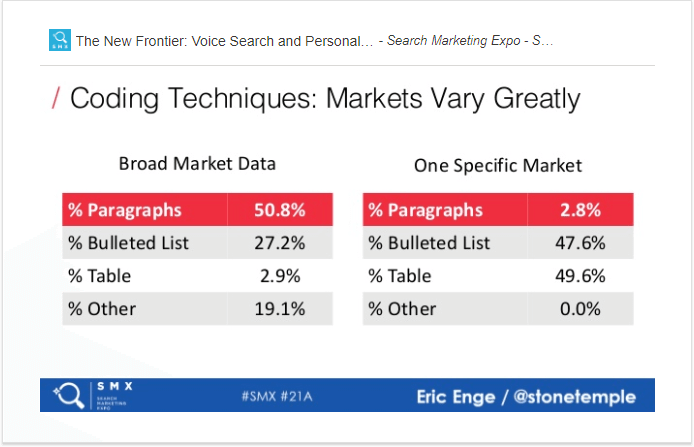
3. Structure your content.
If you give answers to some hot topics in your niche, write small paragraphs of text (~40-60 words) to resemble a size of a featured snippet. Steer clear of dictionary definitions, as they are covered by answer boxes in SERPs.
2. Use schema markup.
Schema markup, if implemented right, can help your site get a few SERP features. Before you apply any schema or tweak the ones you have, run some experiments right in Google SERPs:
- See which SERP's feature types are pulled with your target queries;
- Check whether your content already occupies any non-organic SERP space and ask yourself whether you like what you see;
- Look for the gaps your content can cover in current search results.
3. Optimize for sitelinks.
Sitelinks occupy quite a lot of space in SERPs. Check for yourself:
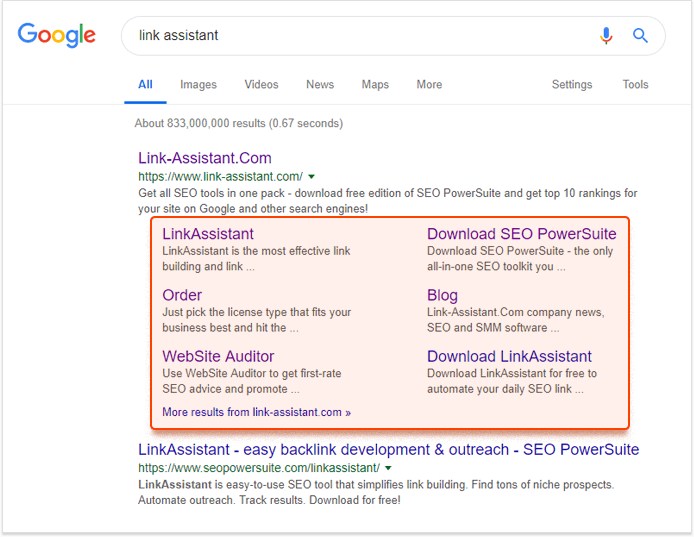
Of course, you cannot make Google show sitelinks according to your liking. But it's possible to create perfect conditions for their display.
How-to
All you need (which is totally in your power) is a logical internal linking structure. What does it mean? Logical, hierarchical site architecture with internal links to important pages.
To see the structure of your site, check out the Visualization feature in WebSite Auditor:
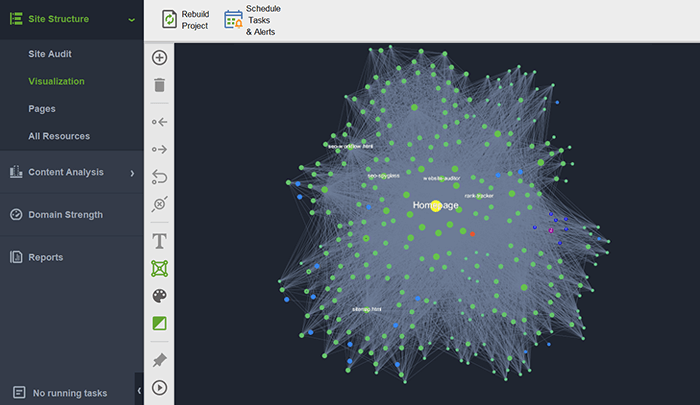
Once you have the interactive graph of your site's architecture, make sure:
- your important pages are not buried under endless clicks;
- the whole structure is more or less shallow (ideally, any page is no more than 3 clicks away).
9. Treat videos as the new content king.
While the content stays the pillar of any site, people bear special love for videos. Just remember how you go on YouTube to watch something about 3D printing, and an hour later, you find yourself learning how to live among penguins so that they won't notice.
Though the above-said is true and you know it, here are the facts:
- We watch about 1 billion hours of YouTube daily;
- YouTube is the 2nd largest search engine;
- Videos boost dwell time on page.
The search stats on YouTube were seriously impacted by lockdowns and other social turmoils of 2020. We’ve seen a 400% growth in demand for online learning and a 500% growth in demand for virtual tours. In the first half of 2020, daily livestreams increased by 45%.
That means more opportunities, yet tougher competition for viewers' attention. This is where optimization and consistency are important to build up emotional connection between the audience and the channel you are working on.
- Make short brand videos and product demos;
- Create educational videos on how to use your products or services;
- Run live broadcasts like webinars or interviews.
2. Help users find your videos:
- Add relevant metadata (shorter titles, rich descriptions) and transcripts for videos for Google to fully understand their intent(s);
- Go for exact keyword matching, as it's still a thing on YouTube;
How-to
Check out Rank Tracker's YouTube Autocomplete tool for keyword research. Go to Keyword Research > Autocomplete Tools > YouTube and paste your target keywords:

Plus, with Rank Tracker, you can check which videos of yours are already in Google video carousels:
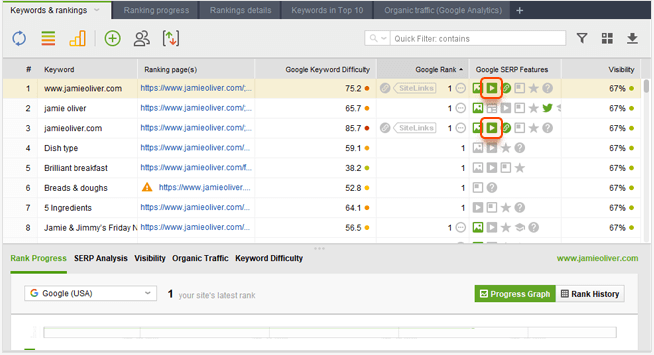
- Fill in keyword tags, as they are used for recommended videos;
- Upload videos to different popular platforms: YouTube (of course), Facebook, Vimeo, Instagram, etc.;
- Submit a video sitemap to search engines.
In case you're serious about video content, refer to this handy guide on YouTube SEO.
10. Update your Google My Business listing.
There are many factors due to which we see different search results for the same query. The strongest being, of course, location.
Trying to serve the best local results, Google is vigorously updating its Google My Business (GMB) feature. So, it comes as no surprise that Google My Business signals make up 25% of local pack ranking factors. By the way, it's a 32% growth compared to 2017.
Have you seen how much Google's real estate those branded boxes occupy? So, if you have a local business, then there's no question you should claim a GMB listing.
Further on, you need to optimize it a bit, as some of GMB components are considered ranking factors (to name a few – Google Posts, images, Google Q&A, and reviews). Plus, it will help secure your presence in Google Maps.
1. The best thing about local SEO is that few businesses actually optimize their listings on a regular basis, so it's an easy way to elevate your brand above your competitors. All you need to do is:
- Publish on Google Posts regularly the same way you do on Facebook or Twitter.
A Google post shows up when someone finds your business on Google Search or Maps. Posts are shareable on social media to get them extra exposure (except for, maybe, a product post).
You can use posts for promotions, sales, events, to inform the audience about changes in your working hours, for example, and generally to increase visibility. So, learn some tips to make your posts great.
- Add your own questions and replies about your business to Google Q&A;
- Upload and further update images in your listing. If you have videos, you can now add them as well;
- Fill in all the categories available in your listing. Mind that Google's constantly adding new ones. So if you haven't logged in to your GMB page for ages, you may spot there are some new (and empty) fields;
- Reviews are an uber important ranking factor seeing ~43% importance increase over 3 years. If you see a happy customer, encourage them to write a review. Always reply to all praises and complaints. And go beyond Google — try getting reviews on other popular platforms.
- Engage in Reserve with Google partner program that enables booking an event right from Search or from Google Maps. This integration with a third-party booking service is supposed to get users their bookings quicker.
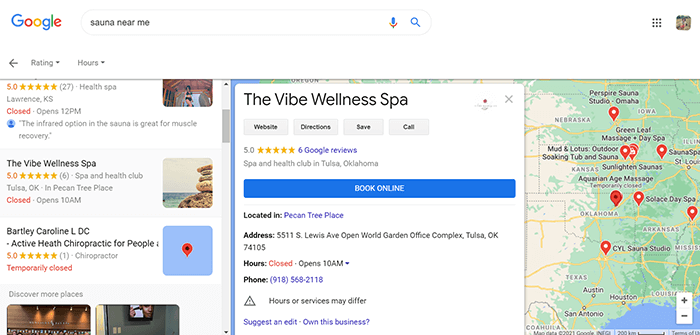
Besides, there is the Stay connected during COVID-19 module where you can offer online services. This feature is one in a series for helping merchants out of COVID-19 implications.
Here, you will be able to share a link for a virtual event, like online classes or video conferencing. Just in case agoraphobia is your new mode of living and you pivot from in-person to virtual customer services.
2. One of the advanced SEO techniques is to track your local SEO rankings in all the locations you have your business present. It's important to see those search listings the way your customers do.
How-to
1. Create a project in Rank Tracker.
2. At Step 4, press the Add More Search Engines button and create a custom search engine for the needed location by pressing the "+" button next to your preferred search engine.
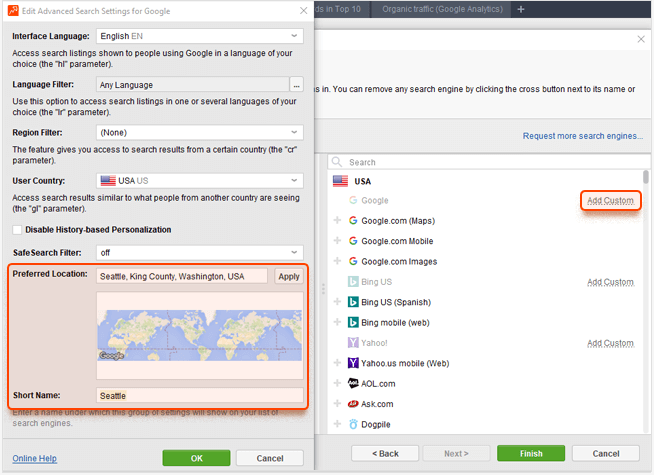
Repeat the same process to create custom search engines for all the locations you're interested in.
11. Build your brand's reputation.
Google Search Quality Guidelines clearly state that brand reputation influences the ranking process.
I know you think about backlinks right now. Yes, they're still very important, but unlinked brand mentions and sentiment around them now also weigh quite a bit in the ranking process.
It works like this. Through unlinked mentions of your brand, Google learns that you're an entity. By analyzing the sentiment (or reputation) around them, the search engine makes a conclusion on what kind of authority you have in a particular field.
This way, each component of your authority-building matters: reputation, ads, problem-solving, etc.
So, when you're up to building your reputation, consider the following:
- Mention your brand online whenever you have an opportunity. The most natural way is to engage with your customers.
- Find people who are ready to talk about your brand, but need just a little bit of nurturing.
- Look at the brand mentions of your competitors. Analyze how they grow their awareness, deal with complaints and crises, and engage with their customers.
- Find opportunities for content marketing and lead generation with like-minded business entities.
How-to
A social listening tool is perfect for all those tasks I've mentioned. Try our Awario tool, for example.
The app finds all the mentions of any brand across the Web, researches the market for sales opportunities, discovers potential customers, and more.
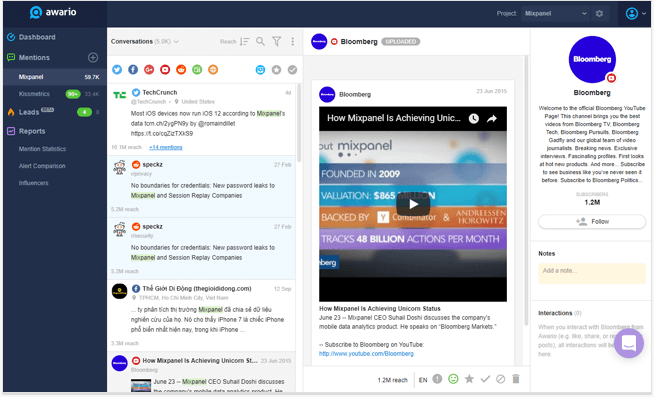
12. Be present on Amazon.
There are a few special intents that drive people off the Google paths. For example, when you have a purchase in mind, you most probably go straight to Amazon (like 66% of people currently do).
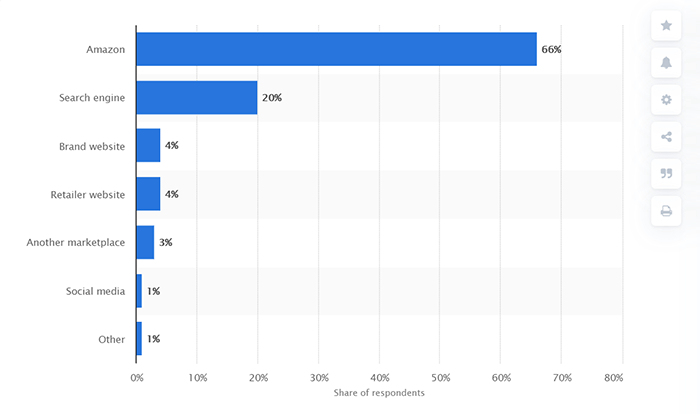
So, if you work on a B2C basis and you're not on Amazon, think of all those customers you miss.
When you get serious about Amazon optimization, mind these principal differences in Google and Amazon's search algorithms:
| Google search algorithm | Amazon search algorithm |
|---|---|
| Pursues a higher research intent, i.e. tries to answer the user's question | Pursues a higher purchase intent, i.e. tries to sell a product |
| Defines relevancy by engagement behavior (CTR, bounce rates, dwell time, etc.) | Defines relevancy by purchase behavior (conversions after the search) |
Among many direct and indirect factors influencing Amazon search algo, sales velocity is considered the key one. In order to increase your sales velocity on Amazon, you need to:
- Launch paid ads to help users find you;
- Create cool content to make visitors convert. Here, "cool content" means a combination of images, unique descriptions, reviews, promos, etc.
How-to
If you need keyword ideas for your product descriptions, you can get them right from Amazon with the help of Rank Tracker's Autocomplete Tools.
Go to Keyword Research's Autocomplete Software submodule and select Amazon, paste in your target keywords, and get lots of keyword combinations sourced from Amazon.
13. Update old posts
Posts may look abandoned once they crawl off the homepage, and that’s too bad. On the one hand, an old post, if it ranked well initially, keeps bringing traffic from organic search and from social media. On the other hand, topics evolve so fast these days. Chances are high that even a several months’ old post grows outdated pretty soon.
So, here is a widely-used hack in the array of advanced SEO techniques: find evergreen topics and recirculate your posts from time to time.
How to update content quickly and efficiently and say it was worth it? Here are a few ideas.
1. Update facts and data.
Probably, there are some fresher statistics or new ratings that have come out recently and will be more valid.
2. Think of making some visuals to support your text in the post.
When there is no designer in your team, try your hand at image design apps like Canva or Visual.ly that have free plans and are pretty intuitive to learn from scratch.
3. Look for new trends in your area.
That’s all about finding what’s on everybody’s tip of the tongue. Explore Google Trends or Trending Now on YouTube to discover fresh topics.
4. Throw in SEO related content into your articles.
And that’s not about keyword stuffing.
In terms of content, we are writing for readers, not for search engines. However, it’s not enough for a page just to be technically crawlable and indexed to rank high in the SERP. There are certain criteria that help algorithms recognize a page as relevant to your keywords and good for users.
How-to
Make your pages better optimized with just a little bit of SEO research. The Website Auditor contains an in-built Content Editor that helps discover competition keywords and embed them into content.
1. Run the tool and go to the Content Analysis > Content Editor module.
2. Add the URL of the post you want to update.
3. Add the main SEO keywords that you picked for this landing page.
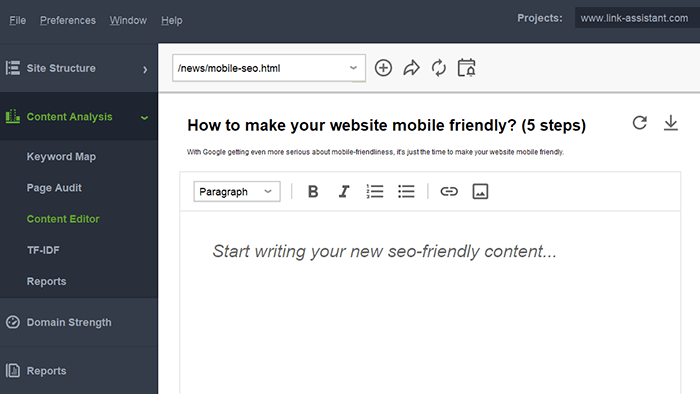
The SEO analyzer will calculate the SEO score and will give recommendations on how to improve it.
You will get a bunch of long tail keywords and other vocabulary that describe your topic better. The calculations are based on the comparison of top ranking pages for the keywords.
The Content Editor suggests on how to improve your page against your competitors.
Switching to the TF-IDF module, you can quickly compare how top competitors use the keywords (and separately long-tail keywords) with tips for your own page like: Use keywords in the page title or Use less of your target keywords because the text looks keyword stuffed.
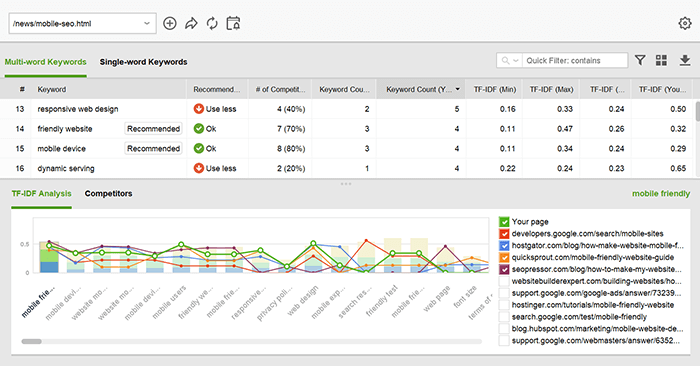
14. Go for creative link building.
Link building is a fundamental pillar of any SEO strategy, and this state of things won't change anytime soon. However, if you are after getting inbound links faster, it almost never means white-hat.
So why not step away from traditional link building and try something unusual (and still white-hat)?
1. Coin new terms.
Our SEO realities change really fast. Quite often there are new things that do not have a proper name yet. There's a good chance you can burst into search results with a fitting description.
Remember "position zero"? I'm sure when it was coined and people picked it up, they constantly mentioned the original source. By the way, now this term returns over a billion search results.
2. Claim links for your visual content.
When you create some useful visual content like diagrams or infographics, people find it really fast and start using it alongside their own content. Not always, I should say, they credit the source for those images.
To bring some justice into this world, search Google for any such image of yours, see which sites use it without a link, and ask them nicely to link back to your site. Voila! You have fast and legitimate links.
3. Win links from your speaking events.
In case you deliver speeches at any events, try to get as many links from them as possible.
First of all, you will surely get a link from the event itself. Second, visitors will blog about the event and speakers, which means more inbound links.
Plus, share the news about the event and your speech on social media to get some likes and shares on different platforms, by publishing on YouTube or Podcasts.
4. Steal links from competitors.
A pretty uncommon in the list of advanced SEO techniques is skyscraper link building. Find a top-performing article in your area, create even a better copy, and analyze the backlink profile of the source site to see who else is interested in this topic. Invite them to link to your site instead, as your revamped post is greater, right?
It usually works, although the technique largely depends on the niche and the topic. Anyway, the research of your competitors’ backlink profile is a great source for pitching high-quality inbound links.
How-to
1. Start SEO SpyGlass and add the URL of the skyscraper article you want to analyze.
2. In a few moments, the SEO tool will collect thousands of domains that link to the article, find them all in the Backlinks module.
3. Filter the backlinks by the Penalty Score and other metrics to pick the best candidates to ask for a backlink.
4. Further, you can export or copy the domains you’ve found, find their contacts (if they are pretty many, take an outreach tool to look for emails automatically) and send a nice email, bringing your valuable content to light.
SEO tip for link-builders: analyze your competitors’ sites for broken links, check if you have an alternative to that (think of creating one in case a content gap is detected!) and invite the linking sites to link to your post instead. Yet another reason why broken links are unpardonable!
Afterword.
I will never ask you to abandon evergreen SEO techniques. At the same time, I solemnly swear I will be encouraging you to try ingenious ways that will fuel your SEO efforts. Why? I think these two approaches nicely complement each other and let you maneuver if needed.
Now tell me, do you use any advanced SEO techniques that you consider underestimated by general SEO guides? Looking forward to meeting you in the comments!
